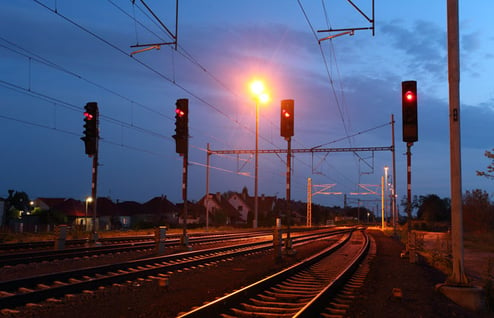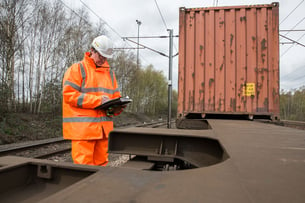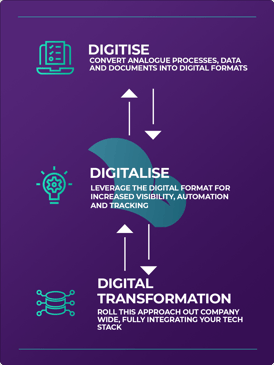Bus safety incidents: Save time and costs with digital reporting
Where there are buses, there are risks. We’re talking about 12-tonne lumps of metal, after all. And no matter how well your bus company manages those...
![]() Facilities Management
Facilities Management
Manage maintenance requests & streamline operations
CMMS
CAFM
EHS
Regulatory Compliance
PPM
EAM
Operations Management
Transportation Management
![]() Food Safety
Food Safety
Prove compliance and ensure standards are up to customer expectations
![]() Retail Task Management
Retail Task Management
Enable your teams to focus on delivering quality and achieve their goals.
Task Creation & Automated Follow-up
Unified Reporting and Data Analysis
Regulatory and Audit Monitoring
Full visibility of every task
IoT
Take action on your data to get ahead
Integrations
Bring mpro5 into your other tools
Automated Workflows
Make your work effortless with automated workflows
Managed Service
Supporting your operations, every step of the way
NEWS & INSIGHTS
Blogs & news
NEWS & INSIGHTS
GET IN TOUCH
GET IN TOUCH
3 min read
 Sam Roberts
:
Feb 16, 2023 12:00:00 PM
Sam Roberts
:
Feb 16, 2023 12:00:00 PM
If you’ve worked in Rail, then you know that there is a lot of paperwork.
Everyone has experienced that defeated feeling when an extra health and safety procedure or a new SQ requirement hits their desk, just as they do another more important task.
This desperately needs to change and, although it is hard to change such a multi-layered, cross-departmental, patchwork-quilt of compliance, reports and databases, it’s not impossible.
I hope by the end of this article that I will have convinced you of the value of ditching your paperwork for a digital system.

The problem starts with an understandable need: the Rail industry absolutely needs to be safe, operational and deliver consistently on passenger expectations.
That requires compliance.
Over time this regulation has evolved: responding to new challenges, becoming more sophisticated, and even changing the focus and profit motivations for operators entirely.
But the paperwork has merely been stapled to the top of the pile. What might have once been a straight forward safety audit will now have multiple additional audits attached to it.
Instead of changing the original process, the approach has always been to add more.

Unfortunately, in respect to paperwork, new SQ regimes and government expectations for digital reporting have only added to the problem.
SQ managers are often spending all their time collating audits from paperwork and legacy systems to try and produce coherent reports, or they outsource this to a third party which only increases the complexity, because they have to collate the data and put it on their own system.
If it sounds like madness that’s because it is.
It’s an enormous time sink for everyone in the industry – whether you’re the person filling out the paperwork and duplicating checks across multiple forms, or you’re in the office manually typing this information into the database, or the unfortunate manager who must collate everything.

With the data in so many different filing cabinets, ancient excel sheets and legacy systems you’re not getting any operational visibility. Many operators are struggling with the new SQ regime, and in large part it’s due to this lack of visibility on KPIs.
Without real-time visibility and the opportunity to look at trends, it’s very difficult to make improvements, and the fines will keep coming.

Understandably, there is a strong sense of pessimism inside the industry when it comes to making compliance more efficient. So many systems have been tried and they’ve all failed to bring the promised unity to data.
When you’ve spent money on a system that hasn’t worked, the idea of spending more money on another one isn’t very appealing.
To add this, how can you bring together so much data from so many different departments?
But operators cannot afford to sit on their hands any longer. The government’s rail reforms demand that better data is produced on passenger service, and this entirely dictates the available funds for operators. 
Compliance, whether it’s for safety, engineering or passenger service is essential, but it shouldn’t stop you from doing your job. In fact, it is possible for this data to help you, if it’s easy to collect and can be presented back to you in a way that makes your life easier.
There are new approaches to data gathering and management in the technology space that operators can take advantage of. But this will only work if you are willing to be open minded.
Whatever you do, do not send out the same tender you did for the last system that didn’t work.
Start from scratch, talk to technology companies in non-committal discussions. Find out what’s possible and look outside of rail to see how other businesses are leveraging similar technology.
The rail industry will always have unique requirements, but the problems it faces are often more similar to other industries than you might think: we can all learn to use data more effectively.
For example, mobile technology can be used to gather compliance data as you work.
An employee takes their own smartphone, downloads an app to guide them through checks, and uses this to prove they have done all the required tasks.
This data is sent to a single database, where it can be visualised for an easy understanding of your operations, faster reporting and improved outcomes. 
Better still, if you have a problem, you can escalate it using the app, and the right person or team can intervene and help to fix the issue quickly.
You don’t have to start by rolling this out across the whole business. Start small and expand it across processes and departments as it becomes more robust.
This kind of system makes compliance easy to do, removes duplication and ensures you get value from the data by making it visible and driving problem solving.
No nasty surprises, no labyrinthine auditing process, just real-time data collection and analysis.
The process of digitalisation gives you the opportunity to think differently: if three different audits need to know if the bins on a particular carriage were emptied, why not answer the question once, and send the data to all three reports?

Rail operators are under enormous pressure right now, but they can relieve some of this by being willing to explore new avenues.
SQ and rail reform are opportunities to do things differently, not to water-down what the rail industry does every day for its passengers, but to give them more time to focus on delivery and to leverage compliance for their benefit, not just to please the government.
Where there are buses, there are risks. We’re talking about 12-tonne lumps of metal, after all. And no matter how well your bus company manages those...
Passenger numbers on UK public transport have nosedived since the Covid-19 pandemic started. And with new commuting habits now deeply ingrained,...

The Internet of Things (IoT) is being used by transportation and logistics companies to streamline internal processes, improve driver productivity...